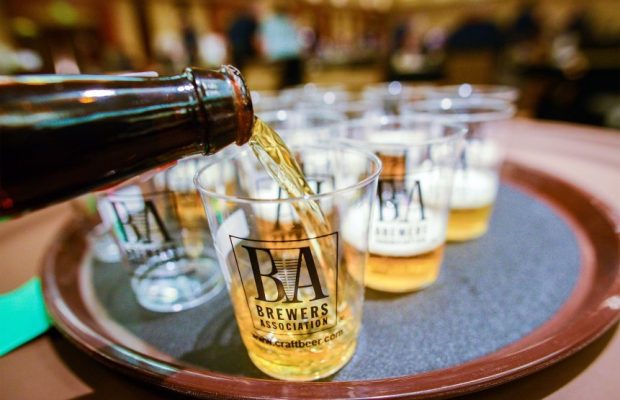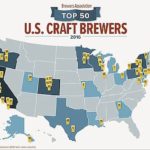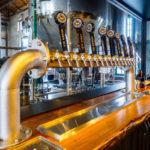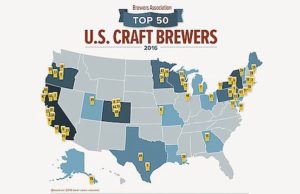Drink what you like

For the most part, the craft beer scene is an inclusive one; the vast majority of the experiences I’ve had at beer festivals, tap takeovers, and craft breweries have been nothing but enjoyable. Yes, there are exceptions, but they’re far from normal. There are, however, a great deal of opinions out there; there’s no shortage of click lists and top-50/100/whatever articles telling you what to drink and why. Some will tell you to chase the newest craze (see my article back in March about the insane rise of Grimm cans) and some will tell you to stand in line for hours for the rarest beer release.
But they don’t know what is in your head nor what your taste buds perceive as being enjoyable. You should feel free to drink what you like without fear of judgment or worry that you’re not living up to someone else’s expectation.
There are some ways to make yourself a better consumer, and that’s important these days. With more and more high-quality options available locally in beer, there is no reason to settle for something just because it is familiar. (Now, obviously, if you’re a tried-and-true Coors Light drinker, this post might not necessarily apply to you. But if you are interested in drinking good beer and, perhaps more importantly as a consumer, paying for good beer, then here are two tips for making the most out of your craft beer experience.
#1 Learn what you like and why you like it.
Nothing drives me crazier than people who dislike a style of beer based on one or two examples, especially when they make generalizations based on limited experience. The most common thing I hear working in a craft beer bar is, “I don’t like hoppy beers” or “I don’t like IPAs” or something along those lines. Most people who say this have probably tried Stone’s Arrogant Bastard or even something more readily available like Dogfish Head 90 Minute IPA or Sierra Nevada Torpedo and have assumed that all IPAs and pale ales taste like them.
But they don’t. Not even close. There are little-to-no similarities between a fresh Tree House Brewing Julius and Sierra Nevada Torpedo, yet one might see them both on a menu and consider them equally. Both are IPAs and are near 7% ABV (6.8 and 7.2 respectively), but that is where the similarities end.Torpedo follows a more traditional (and by traditional I mean for the modern craft era of the last 30-ish years) formula: it is bitter, herbaceous, and pine-forward. Julius, on the other hand, is bright and refreshing, bursting with mango and pineapple. And this is where IPAs have been heading over the last few years. Bitterness bombs have given way to citrus-forward profiles that lend to higher drinkability and less face puckering.
So when someone comes in and sits at my bar and wants a recommendation, I ask them what they enjoy. They tell me something along the lines of “nothing too hoppy,” and I pour them an IPA or pale ale without telling them the style, maybe something by Hill Farmstead or Grimm or Singlecut, and most of the time they enjoy it. Not always, but often. So it’s worth learning what you like about a style of beer rather than lumping them all together under one style because, more often than not, you’ll end up missing delicious beers as a result. Do you like citrus but hate pine? Great. Tell your bartender.
#2 Sample widely.
Admittedly, one of the downfalls of the current craft beer world is that there are almost too many beers to try. Beer Advocate currently lists 17,404 different American IPAs. This ignores American Pale Ales (APA), Double/Imperial IPAs (7.5%+ ABV), and anything similar that hasn’t been categorized in one of these three categories (any IPA made outside of the USA, for example). This can lead to some confusion when you reach the bar or the bottle shop. My only advice here is to sample widely, trying to remember as much about what you like as possible. Often this means remembering either the brewer or the hops used because generally you can expect a similar level of quality out of a particular brewer and similar flavors based on hops used (you might, for example, really like the citrus notes produced when an IPA uses Citra or Mosaic hops).Consider an app like Untappd, with which you can record the beers you’ve had and whether or not you’ve enjoyed them.
You may also end up discovering entire styles of beer you didn’t know you’d like. For example, until a few years ago, there was a near-extinct style of beer that, now, is one of the biggest booms in beer styles: the German gose [pronounced goes-uh], a tart-but-not-too-sour beer that is low in ABV and high in drinkability, especially warm weather. If people weren’t trying new things, this beer might have never regained popularity.
Now, I’m not saying these two rules are perfect, but if you follow them, you’ll be more prepared to discover the world of craft beer. You’ll be better equipped to discuss what you like and why you like it, and that will allow bartenders at craft beer bars or employees at local beverage centers to point you in the direction of new things you might enjoy. But just don’t get caught up in it all; if you like a beer, drink it.
Click here to view original web page at blog.timesunion.com



















